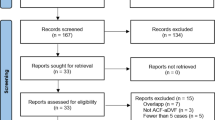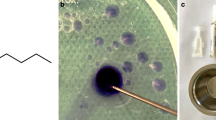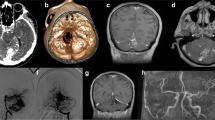Abstract
Background
Proximal middle cerebral artery (M1 segment) aneurysms are relatively deeply located in neighboring lenticulostriate arteries, which make them unsuitable for microsurgery. We aimed to investigate the clinical and radiological outcomes of endovascular coiling of M1 segment aneurysms.
Methods
Between January 2003 and December 2014, we retrospectively reviewed the medical records of 52 patients (52 aneurysms) from four institutions who underwent endovascular coiling of M1 segment aneurysms. Patients who underwent clinical and radiologic follow-up for more than a year after the procedure were evaluated.
Results
The aneurysms were located in the early frontal branch, early temporal branch, and lenticulostriate artery in 28, 15, and nine patients, respectively. Endovascular coiling was achieved in 51 cases and failed in one case. Of these 51 cases, 46 (90.2%) and five (9.8%) were non-ruptured and ruptured aneurysms, respectively. Initial angiographic results revealed complete occlusion in 26 (51.0%), residual neck in 16 (31.4%), and residual sac in nine (17.6%) cases. One failed case had a symptomatic procedural complication of thromboembolism. However, there was no permanent morbidity or mortality. Two major recanalization cases (3.9%) were retreated by endovascular coiling. On multivariable logistic regression analysis, aneurysmal recurrence was significantly related to aneurysm height (OR, 1.887; 95% CI, 1.107 to 3.217; p = 0.020), width (OR, 1.836; CI, 1.127 to 2.992; p = 0.015), and neck (OR, 4.017; CI, 1.220 to 13.232, p = 0.022).
Conclusion
Endovascular coiling of M1 segment aneurysms appeared to be a feasible treatment option with a relatively low-retreatment rate. Aneurysm size was statistically significantly associated with recurrence.


Similar content being viewed by others
Abbreviations
- DSA:
-
Digital subtraction angiography
- GOS:
-
Glasgow Outcome Scale
- MCA:
-
Middle cerebral artery
- MRA:
-
Magnetic resonance angiography
References
Briganti F, Delehaye L, Leone G, Sicignano C, Buono G, Marseglia M, Caranci F, Tortora F, Maiuri F (2016) Flow diverter device for the treatment of small middle cerebral artery aneurysms. J Neurointerv Surg 8:287–294
Cho YD, Lee WJ, Kim KM, Kang H, Kim JE, Han MH (2013) Endovascular coil embolization of middle cerebral artery aneurysms of the proximal (M1) segment. Neuroradiology 55:1097–1102
Doerfler A, Wanke I, Goericke SL, Wiedemayer H, Engelhorn T, Gizewski ER, Stolke D, Forsting M (2006) Endovascular treatment of middle cerebral artery aneurysms with electrolytically detachable coils. AJNR Am J Neuroradiol 27:513–520
Feng Z, Li Q, Zhao R, Zhang P, Chen L, Xu Y, Hong B, Zhao W, Liu J, Huang Q (2015) Endovascular treatment of middle cerebral artery aneurysm with the LVIS junior stent. J Stroke Cerebrovasc Dis 24:1357–1362
Fiorella D, Albuquerque FC, McDougall CG (2006) Durability of aneurysm embolization with matrix detachable coils. Neurosurgery 58:51–59
Iijima A, Piotin M, Mounayer C, Spelle L, Weill A, Moret J (2005) Endovascular treatment with coils of 149 middle cerebral artery berry aneurysms. Radiology 237:611–619
Iwama T, Yoshimura S, Kaku Y, Sakai N (2004) Considerations in the surgical treatment of superior-wall type aneurysm at the proximal (M1) segment of the middle cerebral artery. Acta Neurochir 146:967–972
Jeon JP, Cho YD, Rhim JK, Yoo DH, Kang H, Kim JE, Cho W, Han MH (2016) Extended monitoring of coiled aneurysms completely occluded at 6-month follow-up: late recanalization rate and related risk factors. Eur Radiol 26:3319–3326
Jin S, Kwon O, Oh CW, Bang JS, Hwang G, Park NM, Jung EA, Han MH, Kang H, Park H (2013) Simple coiling using single or multiple catheters without balloons or stents in middle cerebral artery bifurcation aneurysms. Neuroradiology 55:321–326
Kim BM, Kim DI, Park SI, Kim DJ, Suh SH, Won YS (2011) Coil embolization of unruptured middle cerebral artery aneurysms. Neurosurgery 68:346–354
Kwon O, Kim S, Oh C, Han M, Kang H, Kwon B, Kim J, Han D (2006) Embolization of wide-necked aneurysms with using three or more microcatheters. Acta Neurochir 148:1139–1145
Kwon OK, Kim SH, Kwon BJ, Kang HS, Kim JH, Oh CW, Han MH (2005) Endovascular treatment of wide-necked aneurysms by using two microcatheters: techniques and outcomes in 25 patients. AJNR Am J Neuroradiol 26:894–900
Murayama Y, Nien YL, Duckwiler G, Gobin YP, Jahan R, Frazee J, Martin N, Viñuela F (2003) Guglielmi detachable coil embolization of cerebral aneurysms: 11 years’ experience. J Neurosurg 98:959–966
Nguyen TN, Hoh BL, Amin-Hanjani S, Pryor JC, Ogilvy CS (2007) Comparison of ruptured vs unruptured aneurysms in recanalization after coil embolization. Surg Neurol 68:19–23
Niimi Y, Song J, Madrid M, Berenstein A (2006) Endosaccular treatment of intracranial aneurysms using matrix coils: early experience and midterm follow-up. Stroke 37:1028–1032
Park D, Kang S, Lee J, Lim D, Kwon T, Chung Y, Lee H (2008) Angiographic features, surgical management and outcomes of proximal middle cerebral artery aneurysms. Clin Neurol Neurosurg 110:544–551
Pero G, Denegri F, Valvassori L, Boccardi E, Scialfa G (2006) Treatment of a middle cerebral artery giant aneurysm using a covered stent case report. J Neurosurg 104:965–968
Pumar JM, Lete I, Pardo MI, Vazquez-Herrero F, Blanco M (2008) LEO stent monotherapy for the endovascular reconstruction of fusiform aneurysms of the middle cerebral artery. AJNR Am J Neuroradiol 29:1775–1776
Quadros RS, Gallas S, Noudel R, Rousseaux P, Pierot L (2007) Endovascular treatment of middle cerebral artery aneurysms as first option: a single center experience of 92 aneurysms. AJNR Am J Neuroradiol 28:1567–1572
Roy D, Milot G, Raymond J (2001) Endovascular treatment of unruptured aneurysms. Stroke 32:1998–2004
Sani S, Lopes DK (2005) Treatment of a middle cerebral artery bifurcation aneurysm using a double neuroform stent “Y” configuration and coil embolization: technical case report. Oper Neurosurg 57:E209–E209
Tan I, Agid R, Willinsky R (2011) Recanalization rates after endovascular coil embolization in a cohort of matched ruptured and unruptured cerebral aneurysms. Interv Neuroradiol 17:27–35
Vendrell J, Menjot N, Costalat V, Hoa D, Moritz J, Brunel H, Bonafe A (2009) Endovascular treatment of 174 middle cerebral artery aneurysms: clinical outcome and radiologic results at long-term follow-up. Radiology 253:191–198
Yang P, Liu J, Huang Q, Zhao W, Hong B, Xu Y, Zhao R (2010) Endovascular treatment of wide-neck middle cerebral artery aneurysms with stents: a review of 16 cases. AJNR Am J Neuroradiol 31:940–946
Author information
Authors and Affiliations
Corresponding author
Ethics declarations
Conflict of interest
The authors declare that they have no conflict of interest.
Ethical approval
All procedures performed in this study were in accordance with the ethical standards of the institutional and/or national research committee and with the 1964 Helsinki declaration and its later amendments or comparable ethical standard.
Informed consent
Informed consent was obtained from the study participants prior to their inclusion in the study.
Additional information
This article is part of the Topical Collection on Vascular Neurosurgery - Aneurysm
Rights and permissions
About this article
Cite this article
Baek, J.W., Huh, C.W., Heo, Y.J. et al. Endovascular coiling of proximal middle cerebral artery aneurysms: is it safe and durable?. Acta Neurochir 160, 2411–2418 (2018). https://doi.org/10.1007/s00701-018-3707-5
Received:
Accepted:
Published:
Issue Date:
DOI: https://doi.org/10.1007/s00701-018-3707-5




